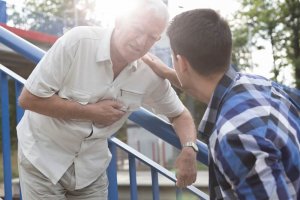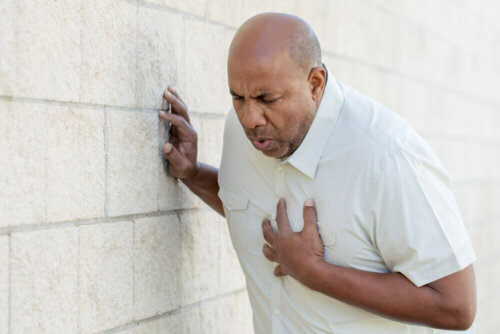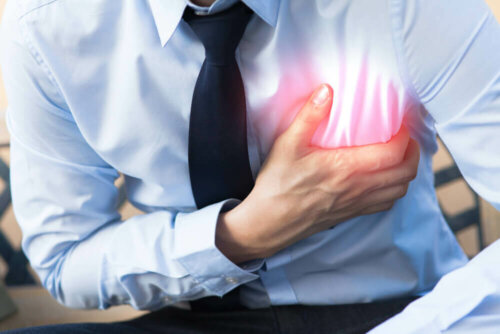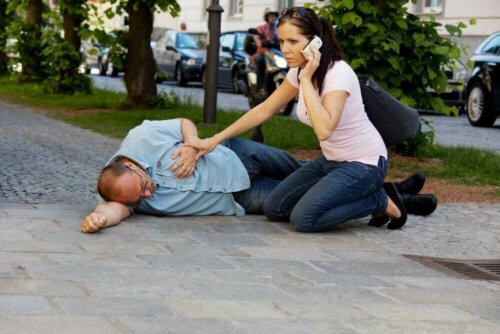How to Respond to a Cardiac Emergency


Written and verified by the doctor José Gerardo Rosciano Paganelli
A cardiac emergency can happen at any time and in any place. It’s good to learn about them and their risks, but in general, these are events almost impossible to anticipate.
With the fast pace of life in today’s world, most people spend a majority of their time at work. Therefore, the chances of these episodes taking place at the workplace are quite high.
Cardiac emergencies happen more frequently than we often want to admit.
- According to the Texas Heart Institute, in the United States, a heart attack occurs every 34 seconds
- In Spain, there are 30,000 victims annually for sudden death and up to 20,000 resuscitation attempts, according to experts from the Spanish Heart Foundation
Differences between heart attack and sudden cardiac arrest
Heart attacks and sudden cardiac arrest are two different things.
- In the first case, there is usually a greater margin of time to reverse the problem
- In sudden cardiac arrest, a person could die within minutes
Find out if Women and Men Experience a Heart Attack Differently
Cardiac emergency – heart attack or myocardial infarction

A heart attack happens when the flow of blood to part of the heart is reduced or completely interrupted due to, in most cases, the rupture of plaque in the coronary arteries.
They can also be caused by a clogged blood clot or a spasm of a coronary artery. Heart attacks do not necessarily mean that the heart stops beating.
The main symptom is a sudden and very intense pain in the chest, which can spread to other areas of the body such as the arms, shoulders, jaw, and neck.
There may be other symptoms, such as:
- Fatigue
- Dizziness
- Nausea
- Sweating
- Heartburn
- Difficulty breathing
- Sudden loss of consciousness
It’s important to keep in mind that the symptoms are not the same in all cases. Sometimes, heart attacks occur without the affected person perceiving some of these warning signals, or they may confuse them with something else and ignore them.
Sudden cardiac arrest

Sudden cardiac arrest occurs when the heart is completely and suddenly paralyzed. The brain and the rest of the organs of the body are deprived of blood flow and oxygen.
Often, sudden cardiac death is so sudden it does not give the person time to get help.
When the heart stops, they suddenly faint, losing consciousness completely. Breathing may also stop.
Only in a small number of cases does the person notice dizziness before fainting.
Learn about What Happens When you Drink Alcohol On An Empty Stomach
First aid for a cardiac emergency

- Call the emergency room immediately and ask for help
- For a heart attack, sit the person on a sofa as comfortably as possible, trying to remain calm
- It is vital that the affected person try to breathe normally. Undo their belt and unbutton their shirt.
- In cases of sudden cardiac arrest, bodily functions (breathing and pulse) should be checked. If there is no response, you should immediately begin cardiac massage or cardiopulmonary resuscitation (CPR).
- To do this, place both hands on the sternum of the patient and press down, keeping your arms extended
- The sternum should be pushed at least 4 centimeters down, with a frequency of at least 100 compressions per minute
- Keep the rhythm regular and with as few interruptions as possible
- You should only use mouth-to-mouth resuscitation if you know the technique. Otherwise, it isn’t useful.
- If an Automatic External Defibrillator (AED) is available, you should use it to try to restart the activity of the heart. These devices don’t require special training to be used; they’re simple to use and have instructions posted on them.
The faster you act, the more positive the outcome is likely to be. For sudden cardiac arrest, an even quicker response is necessary. For every minute that passes, the chances of survival decrease by 10%, so after 10 minutes they’ll be at zero.
If the people around the affected person don’t act and just wait for an ambulance, the chances of a tragic outcome go up to 95%.
Note: to learn how to act in case of a cardiac emergency at home, you can consult the recommendations of the experts of the Spanish Heart Foundation.
This text is provided for informational purposes only and does not replace consultation with a professional. If in doubt, consult your specialist.








